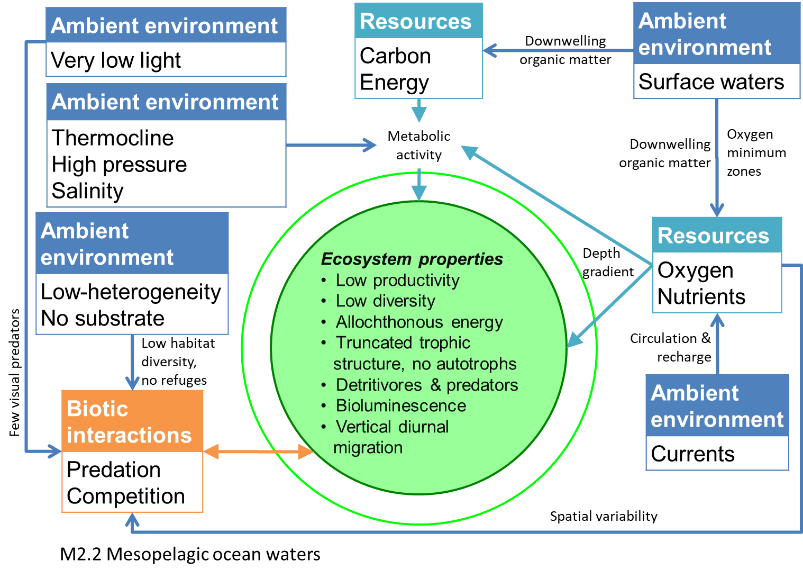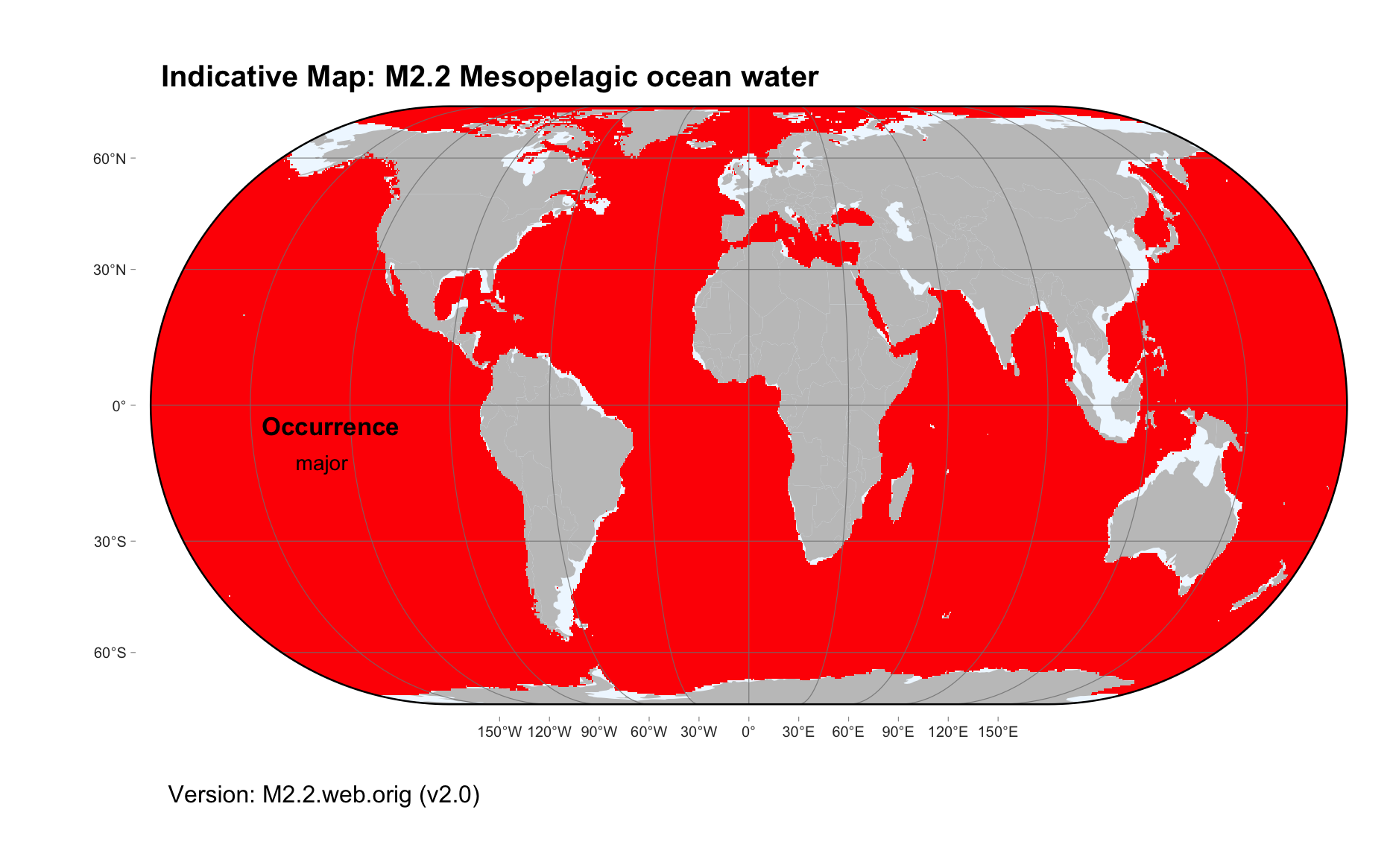Global ecosystem typology
Alternative site for the Global ecosystem typology with additional information for ecosystem profiles and indicative maps.
This site is maintained by jrfep
M2.2 Mesopelagic ocean water
Biome: M2. Pelagic ocean waters biome
Contributors:
(texts)
This very low light ‘twilight zone’ (~200-1000m depth) divides the surface epipelagic waters from the deep ocean. Sunlight is too dim for photosynthesis, but in the upper mesopelagic zone there is enough to enable some visual predators to exploit their prey. Often used as a refuge by species that migrate upward at night to feed in more productive epipelagic waters when predation risk is lower, it supports a high but unknown biomass of fish and planktonic detritivores, relying on flux of nutrients from upper oceanic layers. Low oxygen zones can form where patches of high biological activity deplete this limited resource. Bioluminescence is a common trait in mesopelagic organisms.
Key Features
Dimly lit ‘twilight’ zone below the epipelagic with a high biomass of diverse detrivores and predators and where bioliuminescence is common.
Overview of distribution
Oceans between ~200m depth/where <1% of light penetrates, down to 1000m..
Profile versions
- v1.0 (2020-01-20): KE Watermeyer; EJ Gregr; DA Keith
- v2.0 (2020-05-27): KE Watermeyer; EJ Gregr; RR Rykaczewski; IG Priede; TT Sutton; DA Keith
- v2.01 ():
- v2.1 (2022-04-06): KE Watermeyer; EJ Gregr; RR Rykaczewski; IG Priede; TT Sutton; DA Keith Full profile available at official site
Main references
Selected references for this functional group:
Robinson C, Steinberg DK, Anderson TR, Aristegui J, Carlson CA, Frost JR, Ghiglione JF, Hernández-León S, Jackson GA, Koppelmann R (2010) Mesopelagic zone ecology and biogeochemistry – a synthesis Deep-Sea Research II. 57: 1504-1518
Sutton TT (2013) Vertical ecology of the pelagic ocean: Classical patterns and new perspectives Journal of Fish Biology 83: 1508‐1527
Diagrammatic assembly model

Maps
Maps are indicative of global distribution patterns are not intended to represent fine-scale patterns. The maps show areas of the world containing major (coloured red) or minor occurrences (coloured yellow) of each ecosystem functional group. See general notes on maps.
There are 2 alternative versions of the indicative map for this functional group, please compare description and sources below.
M2.2.IM.orig_v2.0
Datasets
- SRTM30-PLUS-V11
Map references
Becker JJ, Sandwell DT, Smith WHF, Braud J, Binder B, Depner J, Fabre D, Factor J, Ingalls S, Kim S-H, Ladner R, Marks K, Nelson S, Pharaoh A, Trimmer R, Von Rosenberg J, Wallace G, Weatherall P (2009) Global Bathymetry and Elevation Data at 30 Arc Seconds Resolution: SRTM30_PLUS, Marine Geodesy 32: 355-371. DOI:10.1080/01490410903297766
M2.2.web.orig_v2.0

Datasets
- SRTM30-PLUS-V11
Map references
Becker JJ, Sandwell DT, Smith WHF, Braud J, Binder B, Depner J, Fabre D, Factor J, Ingalls S, Kim S-H, Ladner R, Marks K, Nelson S, Pharaoh A, Trimmer R, Von Rosenberg J, Wallace G, Weatherall P (2009) Global Bathymetry and Elevation Data at 30 Arc Seconds Resolution: SRTM30_PLUS, Marine Geodesy 32: 355-371. DOI:10.1080/01490410903297766
Check: the Glossary / Profile structure / the public document